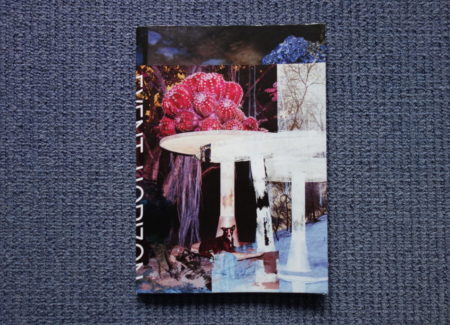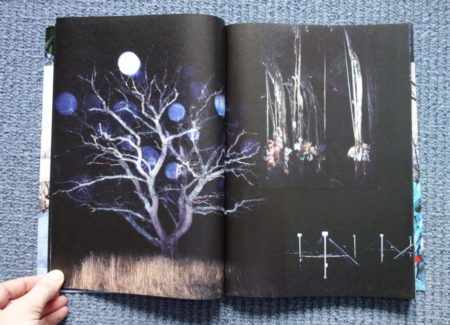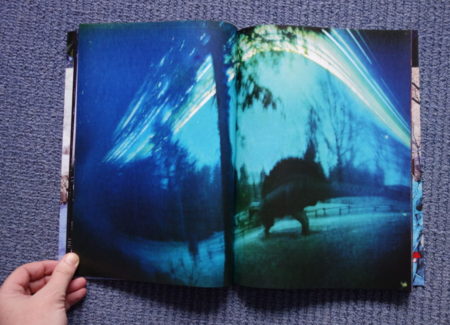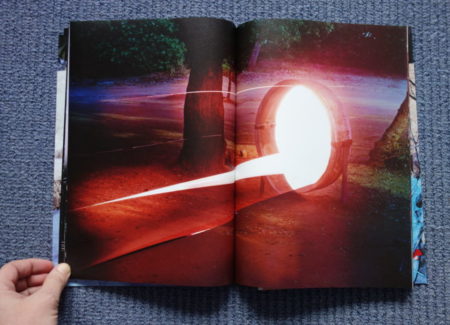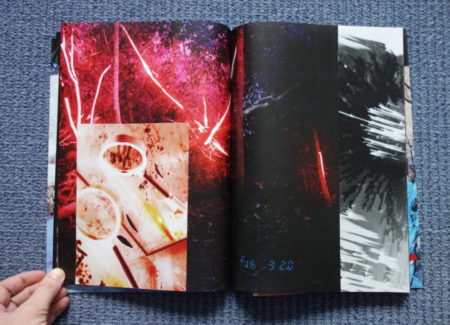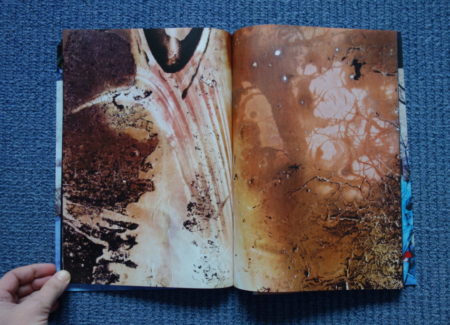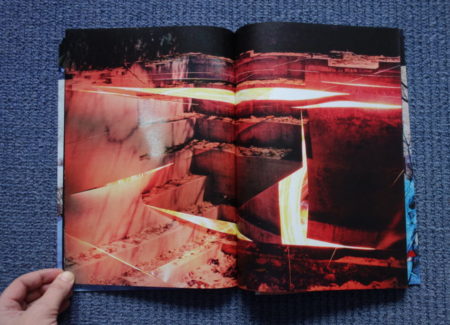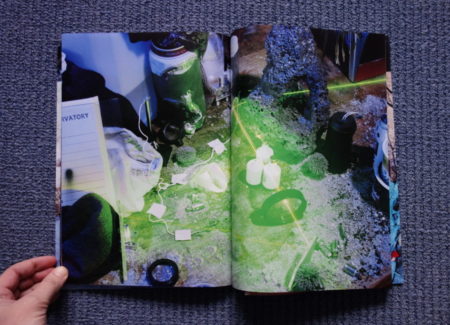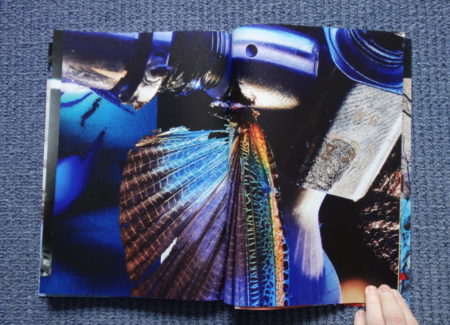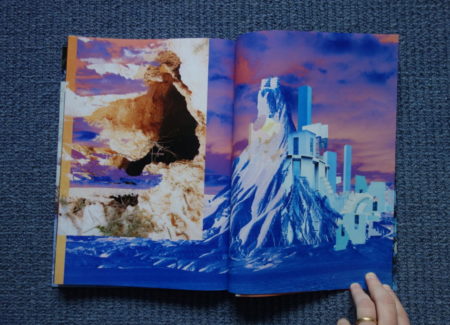JTF (just the facts): Published in 2017 by RVB Books (here). Softcover (with foldout poster dust jacket), Japanese binding, 118 pages, with 72 color photographs. Includes a short explanatory text by the artist. (Cover and spread shots below.)
Event Horizon was originally a self-published in 2016, and that version was shortlisted for the Aperture-Paris Photo First Photobook prize.
Comments/Context: Using photography to illustrate, or at least imagine, a scientific property that has heretofore been unseen by humanity sounds like a pretty daunting task, even for the most open-minded and risk-taking of artists. But this is what the French photographer Quentin Lacombe has set out to do, at least metaphorically, in his daring photobook Event Horizon.
An event horizon is the particular cosmic boundary line where everything closer to a black hole is inextricably pulled toward to its massive center. At this “point-of-no-return” edge, the gravitational forces prevent light (and anything else) from escaping, effectively warping the surrounding spacetime. What passing through an event horizon and following on (or falling) toward the center of a black hole might actually look like is a subject of scientific speculation; in the recent film Interstellar, Matthew McConaughey jittered through one but survived, ultimately ending up in a mind-bending multi-dimensional tesseract.
Lacombe’s photobook book is organized as a distinct one-way progression, with the images depicting the process of incrementally approaching and then crossing the event horizon. In the first portion of the sequence, full spread images of light, trees, animals, unidentifiable technologies, and futuristic houses bathed in surreal nighttime colors offer snippets of mystery, eventually giving way to two and three image collages that wrap around the edges to the other side of the page. The way the pictures are layered and overlapped, the pace slowly builds, like a heartbeat that is speeding up, each rusty satellite dish and feral pig adding to the feeling that the dark world we inhabit (or have come from) is laced with encroaching menace.
A short series of pages filled with an unidentified black and white form that cracks and breaks apart seems to represent the crossing of the event horizon itself. Full blackness is broken by the slow dispersal of these fragmented (photogram?) forms, which then disperse into the fluttering wings of a sea of birds in negative reversal. The effect is something akin to the buildup of noisy static, or the flash dispersal of waves into nothingness.
Once on the other side, the weird warping effects of the black hole start to show up with more regularity. Shafts of bright light twist and bend through the murky forest, seeming to bring dinosaurs back to life; time is clearly coming unglued. Many of the images start to physically break apart, the cracks and seams filled by shockingly intense light. Natural colors seem to shift and invert and the jungle seems to writhe and seethe, the very fabric of human existence tearing right before our eyes. As Lacombe follows this fracturing process further, he bores into textural close ups, where cracked dirt and watery chemicals are interrupted by echoes of light, the breakdowns becoming more intense and violent with each successive page turn.
While all this is going on, we then seem to have a momentary interlude or flashback, our attention pulled back to the cluttered tabletop of some scientific tinkerer. Beer cans, dirty dinner plates, cigarette butts, and anti-mosquito spray get in the middle of the bouncing mirrored angles of a green laser beam, with chemical dust, spark plugs, loose wires, and used film tossed here and there. These overcrowded still lifes feel like distant memories, or failed experiments, or random tangents being followed by a distracted brain.
When we return to the ongoing progression, all image physicality is gone. Paper-based collaging has been replaced by digital manipulation, the layers of images bleeding into each other. Transparencies, inversions, and other oddball juxtapositions pile up in ever increasing density, with cattle heading into snow fields, cacti perched on tabletops, and gnarled tree branches groping around page edges. The final few pages seem to represent the complete dissolution of discrete imagery, with insect wings merging with machined metal parts, stuttering futuristic architecture climbing up mountainsides, and bird feathers, tree stumps, and buckyball cages losing definition and becoming one frantically continuous band of morphing texture. And then the journey ends, back in complete, empty blackness. You can almost hear the suffocating silence.
Much of Lacombe’s innovation here lies in the idea of photography as interconnected flow rather than as separate image thoughts. To the extent that there is a “narrative” in Event Horizon, it is in constant motion, moving from one successive state to another, but without ever being cinematic. He’s found an in-between zone of image fluidity that feels fresh, and leveraged this unique approach with vitality and grace to symbolically imagine the unknowable conundrums of space. Event Horizon is thus both a literal and a figurative barrier breaker – in the intellectual effort to visualize this cosmic transition, Lacombe forcefully upends the structural foundations of the medium, creating an unexpected pathway from dissolution to reformation.
Collector’s POV: Quentin Lacombe does not appear to have consistent gallery representation at this time. As such, interested collectors should likely follow up directly with the artist via his website (linked in the sidebar).
